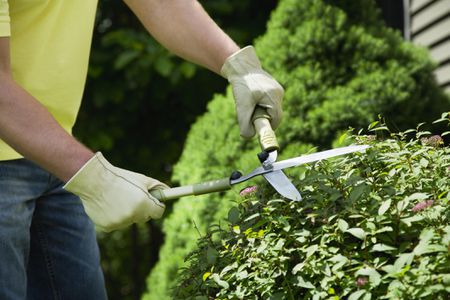What should be pruned in the Winter as opposed to Fall?
In regions that experience temperature variances, there are some plants that go dormant in the winter and come back into bloom. During the Fall they will begin to stop growth and prepare for the forthcoming cold weather. Similar to some animals, they will go into dormancy. There are certain times of the year that are best for preparing them – keeping this is mind is important for the health of the trees and shrubbery.
Prune hard end of winter/very early spring during this time before any new growth begins. With doing so, the tree/shrubbery takes the energy from the beginning of the season and focuses it solely on producing new, healthy growth when the warmer temperatures of spring roll around. For the most part, plants that bloom on new growth should be pruned in the winter and early spring, while those that bloom on old growth should be pruned in late spring or summer (i.e., after their flowers fade).
General Pruning Tips:
- Prune on a mild, dry day – this helps prevent spreading of waterborne plant diseases or damage from cold temperatures.
- Never prune too early in the winter – incisions can dry out if the temperature drops well below freezing.
- When you are pruning, you want to first prune out dead and diseased branches, especially if they were affected by the freezing temperatures or winter weather.
- Remove all unwanted lower branches on all evergreen shrubs and trees. In general, your goal is to keep the branches that develop or maintain the structure of the tree.
- When cutting the branches, cut them at the node, the point at which one branch or twig attaches to another.
When to Prune Flowering Shrubs:
Depending on when the shrub blooms and if it flowers on growth produced during the same or previous year will depend on when you should prune.
- Shrubs that form their flower buds on “new” wood (i.e., growth that will occur in the coming spring) should be pruned in winter and early spring. Examples include: abelia, beautyberry, butterfly bush, most clematis, our native smooth hydrangeas, panicle hydrangeas, potentilla, roses, rose-of-sharon, shrub dogwoods, Japanese spirea, St. Johnswort, and summersweet.
- Shrubs that bloom on “old” wood (i.e., growth from the previous year) should be pruned in late spring or early summer, after the flowers fade. Examples are: azalea, beautybush, bridalwreath spirea, spring-blooming clematis, cotoneaster, deutzia, enkianthus, flowering almond, forsythia, mophead hydrangeas, lilacs, mock orange, mountain laurel, ninebark, oakleaf hydrangea, pieris, rhododendron, viburnum, Virginia sweetspire, weigela, wisteria, and witch hazel. If you cut them too early, you’ll cut off the buds that would’ve opened this spring! The best time to prune spring-blooming shrubs is right after the spring blooms fade.
When to Prune Trees and Evergreens:
- Evergreen shrubs (yew, holly, and boxwoods) and evergreen trees (spruce, fir) should be pruned in late winter or early spring when they are dormant, and before new growth begins. Pines are pruned in early June to early July.
- Prune shade trees, such as oak, sweetgum, maple, katsura and hornbeam in late winter or early spring.
- Wait to prune spring-flowering trees, such as dogwood, redbud, cherry, pear, and magnolia, until after they flower. Read more about this here.
Common Shrubs and Trees to Prune in Late Winter or Early Spring:
| WHEN | HOW | |
| Abelia | Winter to early spring | Maintain a graceful arching form by cutting away some of the oldest stems at ground level. Pinch growing shoots in spring if you want bushier growth. |
| Azalea | Late winter or during the growing season | Before growth begins for the season, improve the form of the bush by shortening stems that jut out of place. During the growing season, pinch growing shoot tips where you want bushier growth. |
| Butterfly bush | Late winter | Cut all stems to the ground. |
| Chaste tree | Late winter or early spring | Evergreen species need little pruning beyond cutting out weak, twiggy, dead, or broken branches. |
| Crape myrtle | Late winter | Wherever the plant is not totally winter-hardy, cut off winter-killed wood or cut the whole plant to the ground. Little pruning is needed where this plant is cold-hardy. |
| Hydrangea | Mostly late winter | For smooth hydrangea, cut all stems to the ground. For bigleaf or oakleaf hydrangea, cut stems with old flowers still attached back to fat flower buds. Some hydrangea are NOT pruned in late winter. To avoid cutting off blooms, see our guide to pruning hydrangea varieties. |
| Smoke bush | Late winter or early spring, before growth begins | Needs little pruning unless you grow it for its purple leaves rather than for its flowers. In this case, prune severely to stimulate vigorous new growth each spring. |
Got roses? Most are also pruned in late winter or early spring but see our guide on Pruning Roses.
** Content referenced through The Farmer’s Almanac.

